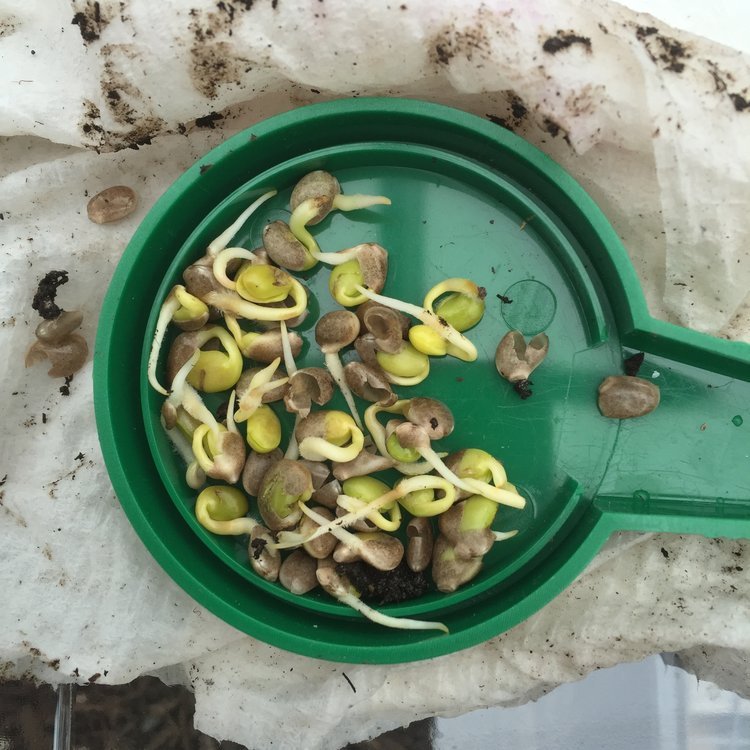To germinate lupine seeds, soak them in water overnight before planting them in well-draining soil. Lupine seeds require specific conditions to germinate successfully.
In this guide, we will explore the steps to germinate lupine seeds effectively. With their delicate and vibrant flowers, lupines are a popular choice among gardeners. However, starting these seeds can be a bit challenging. By following the proper germination process, you can increase your chances of success.
We will discuss how to germinate lupine seeds using a simple and effective method. Whether you are a seasoned gardener or a beginner, these guidelines will help you successfully propagate lupines and enjoy their beautiful blooms in your garden. Let’s dive in and discover the secrets to successful lupine seed germination.

Credit: www.sentinelsource.com
How to Germinate Lupine Seeds: Step by Step Guide
Choosing Lupine Seeds
Choosing the right lupine seeds is crucial for successful germination. Start by selecting the lupine seed variety that suits your needs and preferences. Lupine seeds come in different colors and sizes, so consider the aesthetic appeal you’re looking for in your garden. Ensure that the lupine seeds you choose are of high quality to ensure better germination rates.
To check the viability of the seeds, perform a simple germination test. Place a few seeds on a damp paper towel and keep them in a warm, well-lit area. After a few days, check if the seeds have sprouted. If a good number of seeds have sprouted, it indicates that the seeds are viable and likely to germinate successfully when planted.
When purchasing lupine seeds, make sure to buy them from reputable suppliers. Look for suppliers with positive reviews and a good reputation for selling high-quality seeds. Avoid purchasing seeds from unreliable sources, as poor-quality seeds may lead to low germination rates and disappointing results in your garden.
Preparing A Suitable Germination Environment
Identifying the Best Location for Germination: When germinating lupine seeds, choosing the right location is essential. Look for a spot that receives full sun for at least 6-8 hours a day. Lupines thrive in well-drained soil, so ensure that the chosen location has good drainage. Avoid areas with heavy clay or compacted soil, as this can hinder successful germination.
Preparing the Germination Container: Lupine seeds benefit from pre-soaking before planting. Fill a container with room temperature water and place the seeds in it. Let them soak for 24 hours to soften the outer seed coat. This will help with germination.
Ensuring Proper Temperature and Humidity Levels: Lupine seeds germinate best in cool temperatures. Aim for a temperature range of 50-60°F (10-15°C). To keep the seeds moist during germination, cover the container with a plastic wrap or use a humidity dome. Check the moisture levels regularly and mist if necessary to maintain proper humidity.
Germinating Lupine Seeds
Scarifying Lupine Seeds: To help break the hard seed coat of lupine seeds and improve germination rates, scarification can be done. This involves nicking the seed coat with a razor blade or rubbing the seeds gently with sandpaper. It is important to handle the seeds carefully to avoid damaging the embryo within.
Soaking Lupine Seeds: Another method that can aid germination is soaking the lupine seeds overnight before planting. Fill a container with water and place the seeds in it, ensuring they are fully submerged. After the specified time, remove the seeds and pat them dry.
Sowing Lupine Seeds in the Germination Container: Once scarified or soaked, the lupine seeds can be sown in the germination container. Fill the container with a well-draining potting mix and gently press the seeds into the surface. Cover them lightly with a thin layer of soil and mist the top to provide moisture.
Providing Adequate Water and Moisture: Proper watering is crucial for successful germination. Keep the soil consistently moist but not waterlogged. Avoid overwatering as it may cause the seeds to rot. Place the germination container in a warm and well-lit area, ensuring it receives indirect sunlight to promote seedling growth.
Caring For Germinating Lupine Seeds
Monitoring the germination progress is crucial to ensure successful growth of lupine seeds. Keep a close eye on the seeds and observe the signs of sprouting. Look for small green shoots emerging from the soil, indicating that germination has occurred. Adjusting light exposure is another important factor in caring for germinating lupine seeds. Provide ample sunlight by placing the seeds in a sunny spot or using grow lights for indoor germination. However, be cautious of excessive exposure to direct sunlight, as it may harm the delicate seedlings.
To prevent diseases and pest infestations, maintain proper hygiene by keeping the germination area clean and free from debris. Regularly inspect the seedlings for any signs of diseases or pests, such as wilting or discoloration. Take necessary measures to eliminate or control such issues, such as applying organic insecticides or using companion plants to repel pests.
Once the lupine seeds have germinated successfully, it is important to prepare them for transplantation. Gradually introduce them to outdoor conditions by hardening off the seedlings. This process involves gradually exposing them to outdoor temperatures and conditions for a few hours each day, while providing protection from strong winds or extreme temperatures. After the hardening off process, transplant the germinated seedlings into their permanent location, ensuring proper spacing and soil preparation.
Troubleshooting Germination Issues
If you’re experiencing slow or failed germination when trying to germinate lupine seeds, there are a few possible causes and solutions to consider.
Poor seed quality or age can contribute to slow or failed germination. Make sure to obtain fresh, high-quality lupine seeds from a reputable source. Additionally, lupine seeds have a hard seed coat that needs to be scarified or nicked before planting. Soaking the seeds in warm water overnight or lightly scratching the seed coat with sandpaper can help with germination. Ensuring adequate moisture and proper temperature conditions during germination is crucial as well.
Mold or fungal growth on lupine seeds can inhibit germination. To prevent this issue, make sure to plant the seeds in sterile, well-draining soil. Water the seeds from the bottom to avoid wetting the seed surface and creating a moist environment for mold to grow. Providing proper air circulation and avoiding overcrowding of seedlings can also help prevent fungal growth.
Damping-off is a fungal disease that can kill seedlings. To prevent damping-off, use sterilized containers and soil to start your seeds. Maintain proper watering practices, allowing the soil to dry slightly between watering sessions. Avoid overwatering and excessive humidity, which can promote fungal growth. Furthermore, thinning out seedlings and providing adequate spacing can reduce the likelihood of the disease spreading.
Frequently Asked Questions On How To Germinate Lupine Seeds
How Do You Germinate Lupin Seeds Quickly?
To germinate lupin seeds quickly, soak them in warm water for 24 hours before planting. Sow the seeds in well-draining soil and keep them moist. Place the pots in a warm spot, ideally around 70°F (21°C), and provide plenty of sunlight.
Germination typically takes about one to two weeks.
Do You Need To Soak Lupine Seeds Before Planting?
Soaking lupine seeds before planting is not necessary. Lupine seeds have a hard outer coating that naturally breaks down over time. Planting them directly into moist soil will allow them to germinate successfully.
How Long To Soak Lupin Seeds Before Planting?
Soak lupin seeds for 24 hours before planting for better germination.
Is It Hard To Grow Lupine From Seed?
Growing lupine from seed is not difficult. With proper care and the right conditions, you can easily cultivate lupine from seed.
Conclusion
Growing lupine from seeds can be a rewarding experience for any gardener. By following these simple steps and providing the ideal conditions for germination, you can successfully grow lupine plants in your garden. Remember to select a suitable spot, prepare the soil, provide adequate watering and sunlight, and be patient as the seeds take time to germinate.
With proper care and attention, you will soon enjoy the vibrant and beautiful lupine blooms in your garden. Happy gardening!

